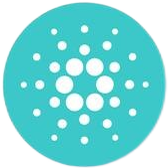
Blockchain's main gig? High MEV and soaring transaction demand!
Date: 2025-05-21 12:09:05 | By Theodore Vance
Blockchain's Native Currency: The Heartbeat of On-Chain Activity
In the bustling world of blockchain, the choice between using native currencies like Solana (SOL) or stablecoins like USDC for transactions is more than just a matter of convenience—it's a reflection of the ecosystem's health and direction. As we delve into the dynamics of on-chain activities, it becomes clear that the preference for native currencies over stablecoins could be a crucial indicator of a blockchain's vitality. This insight comes from a recent discussion with crypto expert Andy, shedding light on the intricate relationship between transaction demand, revenue generation, and the future of blockchain economics.
The Pulse of Transaction Demand
At the core of any blockchain's activity is the unit of account, which serves as the primary currency for transactions. According to Andy, high transaction demand is closely linked to the activities that occur on the blockchain. "When there are things to do on the blockchain, that's when you see a surge in demand for its native currency," he explains. This phenomenon is particularly evident on platforms like Solana, where users engage in buying and selling meme coins and other digital assets. Andy's personal experience reflects a 50/50 split between using SOL and USDC, but he leans towards the native currency for its efficiency and direct integration with the platform's ecosystem.
Revenue Generation and the Native Currency
The interplay between revenue generation and the use of native currencies is akin to the chicken-and-egg dilemma. As Andy points out, "Fees are generated because there's a specific use for the native currency on that chain." This symbiotic relationship drives the blockchain's economic engine, with the native currency serving as the commodity money that fuels transactions and activities. The question remains: which comes first, the revenue or the application? In today's landscape, both seem to be happening simultaneously, reinforcing the importance of native currencies in sustaining and growing the blockchain's ecosystem.
The Future of On-Chain Transactions
Looking ahead, the balance between native currencies and stablecoins like USDC could shift. Andy speculates on the future, questioning whether the current 50/50 split will remain or if there will be a greater reliance on stablecoins. "In five years, will it still be 50/50, or will more transactions be conducted in stablecoins?" he muses. The long-term perspective is even more intriguing. "In 50 years, will we still be using USDC on-chain, or will the preference for native currencies like Solana remain strong?" This forward-thinking approach highlights the evolving nature of blockchain economics and the potential shifts in user behavior and platform design.
The discussion also touches on the broader sentiment towards fiat currencies and stablecoins. Andy expresses a bearish view on holding cash or anything pegged to fiat, such as USDC. However, he acknowledges that if using stablecoins makes trading easier, he would consider it. "At the end of the day, trading with Solana is the default because it generally offers the best execution," he notes. This preference for native currencies underscores their role as the default choice for many users, driven by the need for efficiency and optimal trading conditions.
As the blockchain landscape continues to evolve, the debate over the use of native currencies versus stablecoins will likely intensify. The insights from experts like Andy provide valuable perspectives on the current state and future possibilities of on-chain transactions. Whether the preference for native currencies like Solana will persist or give way to a greater reliance on stablecoins remains to be seen. One thing is clear: the heartbeat of blockchain activity lies in its native currency, and understanding this dynamic is key to navigating the future of digital economies.

Disclaimer
The information provided on HotFart is for general informational purposes only. All information on the site is provided in good faith, however we make no representation or warranty of any kind, express or implied, regarding the accuracy, adequacy, validity, reliability, availability or completeness of any information on the site.
 9
9  0
0  BLOCKCHAIN
BLOCKCHAIN
Comments (0)
Please Log In to leave a comment.